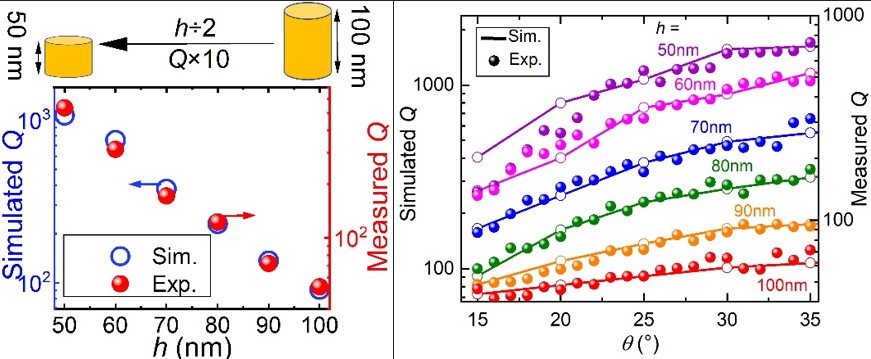Revolutionizing Plasmonics: Study in Suppression of Losses Unveils New Possibilities
Date:24-10-2023 | 【Print】 【close】
Over the past two decades, plasmonics has emerged as a promising platform for the large-scale integration of nanophotonic devices, enabling a wide range of applications. However, the field has grappled with inevitable losses, particularly in the visible spectrum, which has hindered the realization of many anticipated plasmonic devices and applications, often revealing fundamental limitations and dead-ends. Effectively mitigating these losses has long been a formidable challenge in the realm of plasmonics.
A research team led by Dr. LI Guangyuan from the Shenzhen Institute of Advanced Technology (SIAT) at the Chinese Academy of Sciences has conducted experiments demonstrating that it is possible to significantly suppress plasmonic resonance losses.
The results was publish in Advanced Optical Materials on August 3.
Their simulations and measurements have shown remarkable Q-factors, reaching as high as 1427 and 790, respectively, at a wavelength of 712 nm. This measured high Q-factor represents a 140% increase over the state of the art (which was at 330). Their findings were published in Advanced Optical Materials on October 18, 2023, and were featured on the back cover of the journal.
Surface lattice resonances (SLRs), arising from the coherent coupling between localized surface plasmon resonances (LSPRs) and the Rayleigh anomaly, have proven highly effective in significantly reducing the absorption and radiation losses of plasmonic metasurfaces. A decade ago, out-of-plane SLRs set a new record for Q-factors but have made limited progress since. In 2019, in-plane SLRs achieved the highest Q-factors for plasmonic metasurfaces in the visible spectrum.
Dr. LI explained, "We observed that almost all literature on out-of-plane SLRs utilized tall metallic nanorods with a height of at least 90 nm. This was based on the belief that nanorods needed to be sufficiently tall to support out-of-plane resonances. However, our research has revealed that SLRs require shorter heights than localized resonances."
By reducing the height of metallic nanorods by half, from the commonly used 100 nm to 50 nm, the research team found, both through numerical simulations and experiments, that the Q-factor can be increased by an order of magnitude. They attributed this significant enhancement to the interplay between the dipole sum of the nanorod array and the scattering of an individual nanorod. This transition from the first type of SLR to the second type results in significantly reduced absorption and scattering losses. These findings enabled the demonstration of record-breaking high Q-factors, reaching 1074/536 for gold nanorods or 1427/790 for silver nanorods in simulations and experiments.
Dr. LI envisions that these ultrahigh-Q plasmonic metasurfaces will reignite research enthusiasm for the application of plasmonic metasurfaces in various fields, including biochemical sensors, plasmonic nanolasers, and nonlinear optics.

The quality factors of plasmonic metasurfaces can be augmented by an order of magnitude via reducing the nanorod height by half, from 100 nm to 50 nm, and can reach as high as ~ 1500 in theory or 790 in experiment in the visible regime. (Image by SIAT)
Media Contact:
ZHANG Xiaomin
Email:xm.zhang@siat.ac.cn